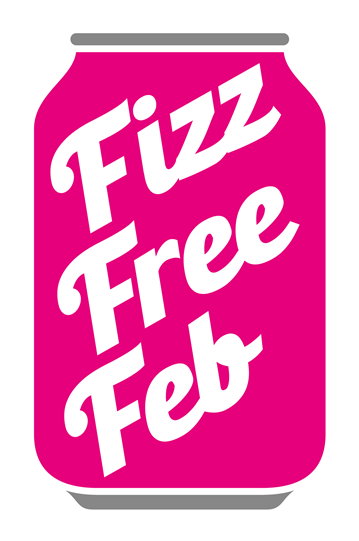Fizz Free February

Find out how you and your family can cut down on fizzy drinks and how this can improve your health.
Take part in Fizz Free February
Could you and your family give up fizzy drinks in February?
Taking part in Fizz Free February is a great way to improve your health and reduce your sugar intake by consuming less fizzy drinks. It can also help you on your way to drinking less sugary drinks for the rest of the year.
Three great reasons to go Fizz Free
- you can save up to £580 a year if you stop drinking one 500ml bottle of branded soft drink, per day, for a year (based on figures from a leading supermarket as of January 2023)
- fizzy drinks can negatively impact your concentration, even making you more restless
- more 5 to 9-year-old children are hospitalised due to tooth decay than for any other reason
How do I take part in Fizz Free February?
To join in, reduce or give up fizzy drinks for the whole month. We will visit participating schools, and children and family centres in January and February to deliver workshops, assemblies and resources.
Why should I stop drinking fizzy drinks in February?
Fizzy drinks are the largest single source of sugar for children aged 11 to 18. Cutting out fizzy drinks is an easy way to reduce your sugar intake. Committing to going fizz free for the entire month of February will make it easier to cut down on fizzy drinks for the rest of the year.
Why is sugar bad for my health?
Excess sugar can lead to tooth decay and weight gain, which in turn increases the risk of heart disease, type 2 diabetes, stroke, and some cancers. It can also reduce your ability to concentrate and learn in school.
What does ‘added sugar’ mean?
Added sugar is the sugar that has been added to food and drink to sweeten it. This added sugar has no nutritional value and only adds empty calories to a drink or meal. Added sugar also includes honey, syrups and fruit juice nectars.
How much sugar should I have?
Sugar should not make up more than 5% of the total energy in your diet. This means the maximum daily amount of added sugar are:
- 4 to 6 years, 5 sugar cubes (19 grams)
- 7 to 10 years, 6 sugar cubes (24 grams)
- 11+ years, 7 sugar cubes (30 grams)
How else can I cut down the amount of sugar I eat and drink?
The easiest way to cut down the amount of sugar you have in your diet is through simple swaps:
- change fizzy drinks to water
- check labels and opt for food labelled with 'no added sugar'
Get more tips on how to make smart sugar swaps from NHS Better Health healthier families.
What foods and drinks are more likely to have high amounts of sugar?
Children in particular are getting a lot of their sugar from fizzy drinks, fruit juice, table sugar, biscuits, cakes, pastries, puddings, breakfast cereals, sweets, chocolate and ice cream.
What can I do to encourage others to drink and eat less sugar?
Challenge your friends to go Fizz Free! You can also encourage your friends and family to make smart sugar swaps using the NHS Better Health for healthier families advice. Don’t forget to share all the information on how sugar and fizzy drinks affect your health!
Five facts about sugar and fizzy drinks
- A can of original taste Coca-Cola contains 34.98g of sugar. A can of Pepsi contains 36g of sugar. That’s about seven teaspoons of sugar
- If a child, aged between 7 and 10, has 36g of sugar in a day, they are consuming 150% of their recommended daily sugar intake
- Every day in the UK there are about 180 operations to remove children’s teeth due to tooth decay
- By the age of 10 children have consumed, on average, 18 years’ worth of sugar
- Sugar production and making fizzy drink products use huge amounts of water. Per 0.5 litre bottle of soda, sugar beet can use 170 to 310 litres of water, which negatively impacts community access to water and the environment (Source: SUSTAIN)
Page last updated: 13 February 2024
